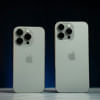Apple introduces revamped Mac Pro with M2 Ultra chip

Apple unveiled a long-awaited update to its Mac Pro line in WWDC 2023. The new Mac Pro, the first major upgrade in four years, heralds Apple's complete transition to its own Arm-powered Silicon. Starting from June 13th, customers can purchase the revamped Mac Pro, priced at $6,999.
Visually, the new Mac Pro retains the iconic design of its Intel predecessor, featuring the distinctive cheese grater metal front. However, beneath the surface lies a host of significant changes. Equipped with Apple's cutting-edge M2 Ultra chip, the Mac Pro now offers six open PCIe Gen 4 slots for expansion and boasts eight built-in Thunderbolt ports. Users can configure the Mac Pro with an impressive 76-core GPU and up to 192GB of memory. Apple claims that a fully specced model can deliver up to three times the performance of the previous Intel version.
Accompanying the refreshed Mac Studio, the new Mac Pro introduces the powerful M2 Ultra chip. The chip consists of two M2 Max dies connected via Apple's innovative UltraFusion technology, providing a 24-core CPU and up to a 76-core GPU that surpasses the M1 Ultra by 30 percent in terms of speed. Built on a 5nm process, the M2 Ultra chip doubles the memory bandwidth of the M2 Max, reaching up to 800GB/s, and supports 50 percent more memory than its predecessor. Apple asserts that the CPU of the M2 Ultra chip is up to 20 percent faster than the M1 Ultra.
The six PCIe expansion slots, based on Gen 4 technology, offer remarkable speed and compatibility with a wide range of cards, monitors, and other expansion options utilized by professional creatives.
The new Mac Pro incorporates eight Thunderbolt 4 ports, a significant upgrade from the previous model, with six ports at the rear and two on top. This enhanced connectivity allows users to connect up to six Pro Display XDRs. The Mac Pro is equipped with Wi-Fi 6E connectivity and Bluetooth 5.3 support for seamless integration with the latest accessories. Apple also includes three USB-A ports, two "higher-bandwidth" HDMI ports capable of supporting resolutions up to 8K and frame rates of up to 240Hz, and two 10Gb Ethernet ports. In a nod to convenience, Apple has retained the headphone jack, ensuring compatibility with various audio devices.

 For all latest news, follow The Daily Star's Google News channel.
For all latest news, follow The Daily Star's Google News channel. 








Comments